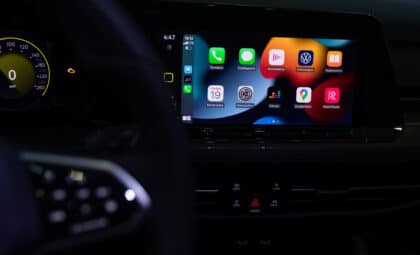This latest safety action affects a large segment of Tesla’s most popular vehicles and draws fresh attention to how the company uses software to control and correct key systems. While the malfunction doesn’t disable steering entirely, the sudden lack of assistance can make driving more difficult, particularly during low-speed turns.
The concern was brought to light through 2,388 warranty claims and 80 field reports, although no injuries or fatalities have been linked to the issue so far.
A Software Flaw Tied to a Specific Version
The affected vehicles are equipped with a version of Tesla’s software that predates 2023.44.30. In this earlier release, a bug in the system could cause the electronic power steering assist to shut down unexpectedly, making steering much harder, especially during tight, low-speed maneuvers such as parking. Drivers experiencing this issue would still retain manual steering, but the sudden change in responsiveness could be jarring and potentially dangerous.
Tesla acknowledged the problem and began pushing out an OTA update in early October to address the malfunction. The National Highway Traffic Safety Administration (NHTSA) confirmed the automaker’s action, stating that the company was in compliance with federal safety protocols by issuing the update proactively. Tesla said it became aware of the issue following a routine review of vehicle logs and customer feedback.

Nearly 380,000 Vehicles Impacted
The recall specifically applies to 2023 Tesla Model 3 and Model Y vehicles built with a particular configuration of steering gear software. According to the report, approximately 380,000 units fall under this category. Tesla began notifying affected owners earlier this month, and the update is being delivered automatically to vehicles connected to Wi-Fi or LTE networks.
Although the number of actual incidents remains small relative to the recall size, the decision to initiate a recall reflects the seriousness of potential steering faults. A sudden loss of steering assist can catch drivers off guard, especially those unfamiliar with the increased physical effort required to control a vehicle without electronic assistance.
As Car and Driver notes, this marks yet another instance of Tesla addressing a critical system issue through software rather than mechanical repair, reinforcing the role of digital infrastructure in modern vehicle safety management.
No Injuries Reported, but Scrutiny Remains
Despite the scale of the recall, Tesla stated that no crashes, injuries, or fatalities have been associated with the defect. Still, the NHTSA continues to monitor the situation closely, part of a broader oversight of software-driven vehicle systems. In recent years, the agency has sharpened its focus on how automakers like Tesla use software to manage safety-critical systems and issue repairs remotely.
The recall also revives concerns around how quickly such issues are identified and addressed—especially when the first signs emerge from internal logs or warranty claims rather than direct consumer complaints. It remains to be seen whether more rigorous federal guidelines will emerge in response to the increasing complexity and autonomy of vehicle software.









